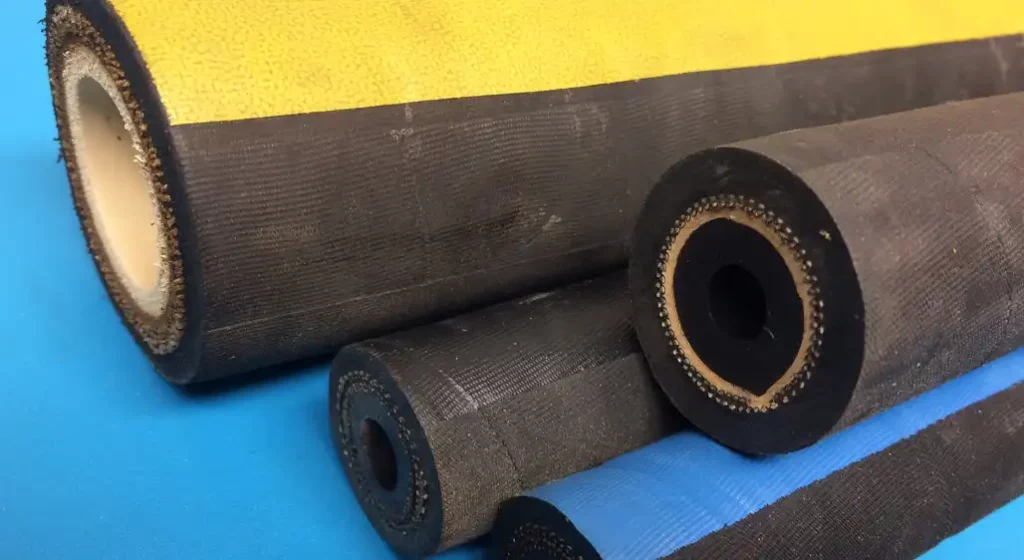In the world of fluid transfer systems, peristaltic pumps play a vital role. These ingenious devices use a squeezing action to move fluids through a flexible hose, making them ideal for applications in various industries.
However, one critical aspect of peristaltic pumps often overlooked is the life expectancy of the hoses used in these systems.
In this article, we’ll delve into the factors affecting peristaltic pump hose life and explore strategies to maximize their durability.
What Is a Peristaltic Pump Hose?

A peristaltic pump hose is a crucial component in a peristaltic pump system used for the transfer of fluids in various industries and applications. It is essentially a flexible tube or hose that is specially designed to withstand the squeezing and pulsating action characteristic of peristaltic pumps.
Here’s a breakdown of what a peristaltic pump hose is and how it functions:
- Flexible Tubing: The peristaltic pump hose is typically made from materials such as natural rubber, silicone, or thermoplastic elastomers. These materials are chosen for their flexibility and durability. The hose must be able to deform and recover repeatedly without losing its structural integrity.
- Squeezing Action: Peristaltic pumps operate on a unique principle. They have a rotor with rollers or shoes that compress and release the hose in a rolling motion. This squeezing action creates a series of “pockets” along the hose, which move along the length of the tubing, pushing the fluid within it forward.
- Isolation of Fluid: One of the key advantages of peristaltic pump hoses is that the fluid being pumped never comes into direct contact with the pump’s mechanical components. Unlike traditional pumps that use seals, diaphragms, or valves, peristaltic pumps rely solely on the hose to handle and transport the fluid. This isolation prevents contamination of the fluid and protects it from damage.
- Material Choice: The choice of hose material depends on the specific application and the nature of the fluid being pumped. For example, natural rubber hoses are known for their resilience and flexibility, while silicone hoses excel in high-temperature environments and offer chemical resistance.
- Maintenance: Peristaltic pump hoses are considered wear components and may need periodic replacement, especially in demanding applications. However, their ease of replacement and the simplicity of the pump design make maintenance relatively straightforward.
A peristaltic pump hose is a specialized tubing designed to handle the unique requirements of peristaltic pump systems. It facilitates the controlled movement of fluids by undergoing repeated squeezing and releasing actions. These hoses play a vital role in ensuring the reliability, precision, and contamination-free transfer of liquids in a wide range of industries, including pharmaceuticals, biotechnology, water treatment, and more.
Factors Influencing Peristaltic Pump Hose Life

Peristaltic Pump Hose Material
The choice of hose material is a crucial factor in determining its lifespan. Different materials exhibit varying levels of resistance to chemicals, abrasion, and temperature extremes. Common materials include natural rubber, silicone, and thermoplastic elastomers. Selecting the right material for your application is paramount.
Fluid Compatibility
The type of fluid being pumped is another critical consideration. Some fluids can be highly corrosive or abrasive, causing rapid wear and tear on the hose. It’s essential to choose a hose material that is compatible with the specific fluid to prolong its life.
Operating Conditions
Operating conditions, such as temperature, pressure, and flow rate, can significantly impact hose life. Hoses exposed to extreme temperatures or subjected to high pressures may degrade more quickly. Properly matching the hose to the operating conditions is essential.
Maintenance Practices
Regular maintenance is key to extending the life of peristaltic pump hoses. Inspecting hoses for signs of wear, cleaning them, and replacing them when necessary can prevent premature failure and costly downtime.
Strategies for Maximizing Peristaltic Hose Life

Proper maintenance and handling of peristaltic hoses can significantly extend their lifespan and ensure consistent performance. By implementing effective strategies, you can reduce wear, prevent leaks, and maintain optimal fluid flow, ultimately improving operational efficiency and minimizing downtime in industrial and laboratory applications.
Proper Storage: Store hoses in a clean, cool, and dry environment away from direct sunlight or harsh chemicals. Correct storage prevents material deterioration, deformation, and contamination, preserving hose flexibility and functionality.
Regular Inspection: Frequently check hoses for signs of wear, cracks, or deformation. Early detection allows timely replacement, preventing failures and ensuring continuous operation while extending the overall service life of your peristaltic hoses.
Correct Installation: Properly align hoses with the pump and avoid sharp bends or kinks. Correct installation reduces stress, minimizes premature wear, and ensures efficient fluid transfer throughout the system.
Use Appropriate Materials: Select hoses made from compatible materials for the fluids being pumped. Matching chemical resistance and temperature tolerance helps prevent degradation, swelling, or leakage, maximizing hose longevity.
Maintain Optimal Operating Conditions: Keep pressures, flow rates, and temperatures within recommended limits. Operating within specifications reduces stress and wear on the hose, preventing premature failure and ensuring reliable, long-term performance.
How often should I replace a peristaltic pump hose?
The replacement frequency depends on factors like hose material, fluid compatibility, and operating conditions. Regular inspections will help determine when replacement is necessary.
Can I extend hose life with proper maintenance?
Yes, proactive maintenance, including cleaning and inspection, can extend the life of peristaltic pump hoses and prevent unexpected failures.
What are the signs of hose wear and tear?
Signs of wear may include cracking, bulging, or loss of flexibility in the hose. If you notice any of these signs, it’s time to consider a replacement.
Are there specialized hoses for specific fluids?
Yes, some hoses are designed for specific fluids or applications. Consult with manufacturers to find hoses tailored to your needs.
How do I choose the right hose material for my application?
Consult with hose manufacturers or experts who can assess your application’s requirements and recommend the most suitable hose material.




